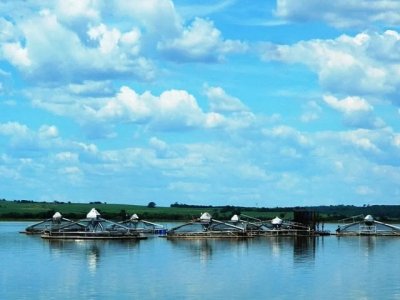Brazilian tilapia: a roadmap for success

Fresh insights into Brazil’s burgeoning tilapia farming sector are offered in a new report from the FAO.
Brazil accounted for 20 percent of Latin America's aquaculture output in 2017
The FAO report, Social and economic performance of tilapia farming in Brazil, details how aquaculture production in Brazil increased 14 percent annually (or 12 percent in terms of farmgate value), from 13,000 tonnes (worth $56 million) in 1987 to 595,000 tonnes (worth $1.5 billion) in 2017, making the country “a regional aquaculture powerhouse”, which contributed 20 percent of Latin America and the Caribbean’s aquaculture production in 2017.
Tilapia have been crucial in this increase, contributing to nearly half the country’s aquaculture production tonnage in 2017. And the new document examines tilapia farming technology and practices in Brazil, dissecting the tilapia value chain, evaluating the sector’s social and economic performance, discussing the importance of proper governance to the sector development, and highlighting potentials, issues, constraints and challenges in the development of tilapia farming or aquaculture in general in Brazil.
The report also puts Brazilian tilapia production in a global context, noting that the fish are “the most popular aquaculture species item, farmed in over 120 countries or territories worldwide”. Indeed, the report explains, global tilapia aquaculture production grew 11 percent annually (or 13 percent in terms of farmgate value) over the past three decades, from 0.3 million tonnes (worth $304 million) in 1987 to 5.9 million tonnes (worth $11 billion) in 2017.
The authors of the report point out that changes in agribusiness in Brazil over the past few decades have been profound, while technological innovations have elevated the country into one of the largest food exporters in the world, which “promises a bright future for tilapia farming or aquaculture in general”.
However, they add: “Institutional instability and regulatory uncertainties pose a great challenge to the development of the tilapia industry. Improving the situation would entail the public sector and the private industries working together to create an enabling environment for Brazil to fully harness its great comparative advantages in tilapia farming.”
In addition, the report concludes: “The social dimensions of aquaculture development deserve more attention. In-depth, participatory communication and consultation involving all stakeholders in the tilapia value chain are needed to delineate a road map to help Brazil’s tilapia aquaculture, or fish farming in general, develop into an economically viable, environmentally sustainable and socially responsible sector.”
Related news
 Why hatchery protocols are key to ensure fish achieve their grow-out potential
Why hatchery protocols are key to ensure fish achieve their grow-out potential While both species account for around 12 percent of the EU’s total aquaculture production they each represent 22 percent of the whole production value.
 Time to tap ocean aquaculture potential
Time to tap ocean aquaculture potential Việt Nam has a huge potential for ocean aquaculture but the lack of a proper development plan, preferential policies and application of high technology
 Renewable energy disembroils shrimp industry from power shortage
Renewable energy disembroils shrimp industry from power shortage A conference titled “Promote investment into renewable energy for Vietnam’s shrimp industry” was held in BạcLiêu provincial Culture Center on 16 August